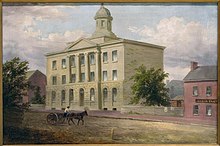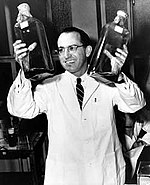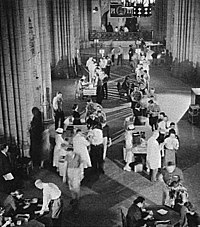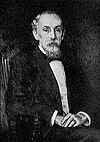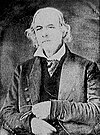
The University of Pittsburgh is a public state-related research university in Pittsburgh, Pennsylvania, United States. The university is composed of 17 undergraduate and graduate schools and colleges at its urban Pittsburgh campus, home to the university's central administration and around 28,000 undergraduate and graduate students. The 132-acre Pittsburgh campus includes various historic buildings that are part of the Schenley Farms Historic District, most notably its 42-story Gothic revival centerpiece, the Cathedral of Learning. Pitt is a member of the Association of American Universities and is classified among "R1: Doctoral Universities – Very high research activity". It is the second-largest non-government employer in the Pittsburgh metropolitan area.
Charles Zeller Klauder was an American architect best known for his work on university buildings and campus designs, especially his Cathedral of Learning at the University of Pittsburgh, the first educational skyscraper.

The University of Pittsburgh Press is a scholarly publishing house and a major American university press, part of the University of Pittsburgh. The university and the press are located in Pittsburgh, Pennsylvania, in the United States.
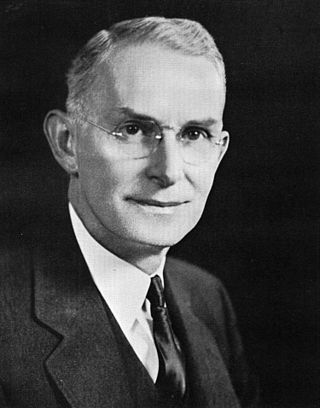
Rufus Henry Fitzgerald was the eleventh Chancellor (1945–1955) of the University of Pittsburgh.

Wesley Wentz Posvar (1925–2001) was the fifteenth Chancellor (1967–1991) of the University of Pittsburgh.

Wesley W. Posvar Hall (WWPH), formerly known as Forbes Quadrangle, is a landmark building on the campus of the University of Pittsburgh in Pittsburgh, Pennsylvania, United States. At 744,695 square feet (69,184.4 m2) it is the largest academic-use building on campus, providing administrative offices, classrooms, lecture halls, a food court, and computer labs. The hall sits on the former site of Forbes Field and contains several artifacts, including the former stadium's home plate and one of two surviving Langley Aerodromes.
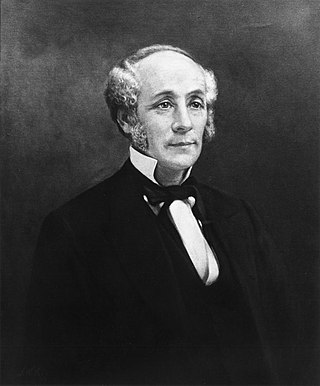
George Woods was an American college administrator. He was the fifth chancellor of the University of Pittsburgh, then called the Western University of Pennsylvania. He served in that capacity from 1858 to 1880.

John F. McLaren is generally numbered as the fourth chancellor of the University of Pittsburgh, then called the Western University of Pennsylvania, serving from 1855 to 1858, although McLaren's official title at the time was "Principal" which was a holdover from the institutions academy days. McLaren took over the leadership of university following the suspension of its operations in 1849 after, for the second time in less than five years, a major Pittsburgh fire had destroyed the university's buildings, equipment, and records. The university reopened in 1854. McLaren was formally inaugurated as Principal on December 19, 1856.
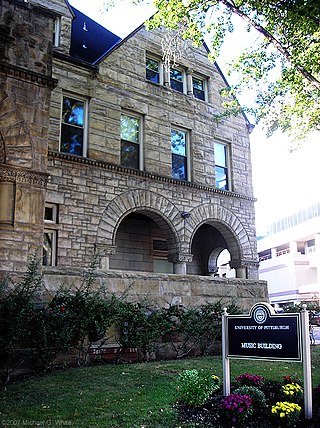
The Music Building is an academic building of the University of Pittsburgh in Pittsburgh, Pennsylvania, United States, and a contributing property to the Schenley Farms National Historic District. A Longfellow, Alden & Harlow-designed mansion that was originally the home of the pastor of a neighboring church and former university chancellor, it also served as the home to a local chapter of the Knights of Columbus, as chemical laboratories, and as the first home of educational television station WQED and that station's original production site for Mister Rogers' Neighborhood. Today it is home to the University of Pittsburgh's Department of Music and the school's Theodore M. Finney Music Library.

Jonas Salk Hall at the University of Pittsburgh is a Pennsylvania state and Pittsburgh History and Landmarks Foundation Historic Landmark. The Art Deco building is named after Jonas Salk, who conducted his research on the first polio vaccine in a basement laboratory while on the faculty at the University of Pittsburgh.

Thaw Hall is a historic academic building on the campus of the University of Pittsburgh that is a contributing property to the Schenley Farms National Historic District and has been named a Pittsburgh History and Landmarks Foundation Historic Landmark. The five-story building of stone, brick, and terra cotta was completed in 1910 in the Neoclassical Beaux-Arts style by architect Henry Hornbostel and today serves as space for a variety of academic classrooms, labs, offices, and centers. It is located between, and connected to, the university's Old Engineering Hall and Space Research Coordination Center (SRCC) along O'Hara Street in the Oakland neighborhood of Pittsburgh.
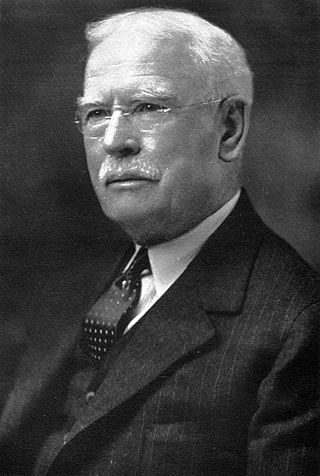
George Hubbard Clapp (1858–1949) was an American pioneer in the aluminum industry and also a numismatist.

Schenley Quadrangle is a cluster of University of Pittsburgh ("Pitt") residence halls that is a Pittsburgh History and Landmarks Foundation Historic Landmark and are contributing properties to the Schenley Farms National Historic District in Pittsburgh, Pennsylvania, United States.

George Hubbard Clapp Hall is a contributing property to the Schenley Farms National Historic District on the campus of the University of Pittsburgh in the Oakland section of Pittsburgh, Pennsylvania. The six-story Gothic Revival structure, designed by Trautwein & Howard, was completed in 1956 and serves as the primary facility of the University of Pittsburgh Department of Biological Sciences. It contains laboratories, classrooms, a greenhouse, and an amphitheater-style lecture hall with 404 seats.

A panther is the animal that serves as the official mascot of the University of Pittsburgh and used as a nickname for both athletic teams as well as other organizations and affiliates of the university. The mascot is generally referred to as the Pittsburgh Panther or Pitt Panther, while the costumed panther mascot is also named "Roc". Up to 20 physical representations of panthers can be found in and around the university's campus and athletic facilities.

David Lawrence Hall is a major academic building at the University of Pittsburgh in Pittsburgh, Pennsylvania, United States, where it serves as the school's largest lecture hall and auditorium facility.

The Log Cabin at the University of Pittsburgh, located near Forbes Avenue, in Pittsburgh, Pennsylvania adjacent to the school's Cathedral of Learning, serves as a landmark that symbolizes the university's origins on the 18th Century western frontier of the early United States. The current log cabin, estimated to date from the 1820s to 1830s, was reconstructed on the university's campus for its bicentennial celebration in order to represent Pitt's original log structure that served the institution through the school's founding in 1787 to the construction of a brick building sometime in the 1790s. The Log Cabin often appears in images and promotional material, particularly when relating to the history of the university.
The University of Pittsburgh School of Pharmacy is the graduate pharmacy school of the University of Pittsburgh in Pittsburgh, Pennsylvania, United States. Founded in 1878, it offers Doctor of Pharmacy (PharmD) and Doctor of Philosophy (PhD) degrees, as well as a residency training program. The school is one of the university's six schools of the health sciences and is ranked in the top 10 of pharmacy schools according to U.S. News & World Report.

David Hunter Riddle was the ninth and last president of Jefferson College from 1862 until its union with Washington College to form Washington & Jefferson College in 1865. He also served as trustee and the acting Principal of the Western University of Pennsylvania, today known as the University of Pittsburgh, from 1849 to 1855.

Joseph Clifton Trees was a college football player at the University of Pittsburgh, the first athlete to receive an athletic subsidization at the school, and, possibly, an early professional football player. He later made millions of dollars in the oil industry and became a trustee and significant benefactor to the university and its athletic department. His hobbies included philanthropy, scientific research and agriculture. His 2,600-acre (11 km2) estate in Gibsonia, Pennsylvania was devoted to a large extent to fruit trees.


